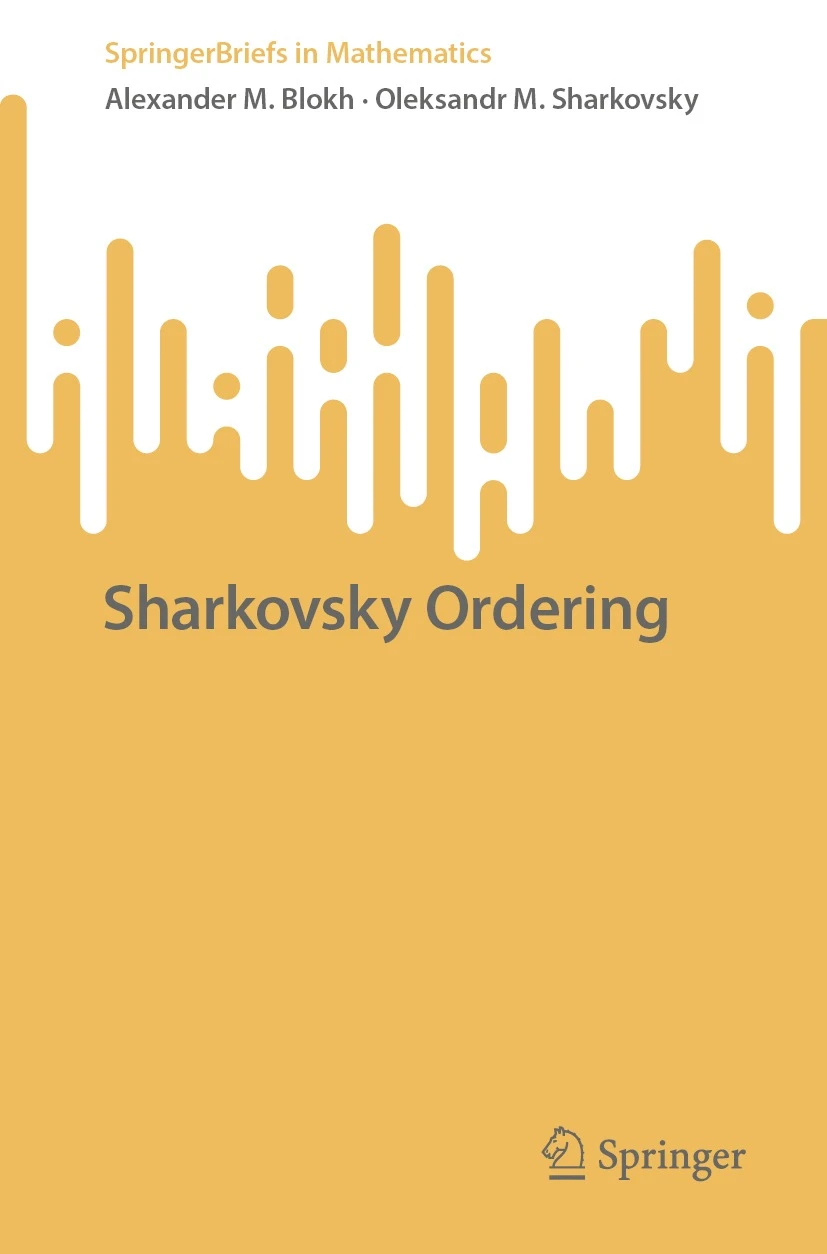
- Author: Alexander M. Blokh and Oleksandr M. Sharkovsky
- Series: Springer Briefs in Mathematics
- Publisher: Springer
- Publication Date: 09/06/2022
- Number of Pages: 120
- Format: Paperback
- Price: $49.99
- ISBN: 978-3030991234
- Category: monograph
[Reviewed by Bill Satzer, on 03/30/2024]
This short book describes the role of Sharkovsky ordering in the theory of dynamical systems, and in particular the way Sharkovsky’s work opened the field of combinatorial dynamics.
Sharkovsky ordering is a total ordering of the positive integers, one that appears very unusual on first acquantaintance. It has the form: $3 ≺ 5 ≺ 7 ≺ ... 2 ⋅ 3 ≺ 2 ⋅ 5 ≺ 2 ⋅ 7 ... ≺ 2^{2} ⋅ 3 ≺ 2^{2} ⋅ 5 ≺ 2^{2} ⋅ 7 ≺ ... ,$ continuing in this pattern with increasing powers of 2 times the positive odd integers, and finishing with a final sequence of descending powers of 2.$$
Sharkovsky’s theorem is about continuous mappings $f$ of an interval $I ⊂ \mathbb{R}$ into itself, and its iterations. Such a map $f$ is said to be periodic if there is an $n >0$ such that the points $x, f(x)$, ...., $f^{n−1}(x)$, are distinct, but $f^{n}(x) = x.$ In that case $n$ is called the (minimal) period of $f$. The set consisting of $x, f(x), f^{2}(x)$, ..., $f^{n−1}(x)$ is called the the periodic orbit of $f$. $$
The first part of Sharkovsky’s theorem says that if f has a periodic point of least period $m$, and $m ≺ n$ in this the ordering, then $f$ also has a periodic point of least period $n$. The second part is that every possible initial segment of the Sharkovsky order is realized on a continuous interval map as the set of periods of its periodic points. This has a couple of immediate consequences. If $f$ has a periodic orbit of period 3, then it has periodic orbits of all other periods. If $f$ has only finitely many periodic orbits, they must all have periods that are a power of 2.$$
About ten years after Sharkovsky’s results, and apparently unaware of them, Li and Yorke published their famous ”Period Three Implies Chaos” paper.
The book begins with the basic ideas and a proof of Shakovsky’s theorem. Then it goes on to discuss variations, such as self-mappings of the circle, triangle maps, and multidimensional extensions.
A highlight of the book is a short chapter at the end written by Sharkovsky that describes how his results developed, how they contradicted common opinions of the time that one-dimensional mappings were simple, could be easily understood, and did not have natural multidimensional analogs. A translation of his original paper appears as an appendix.
Bill Satzer (bsatzer@gmail.com), now retired from 3M Company, spent most of his career as a mathematician working in industry on a variety of applications. He did his PhD work in dynamical systems and celestial mechanics.
